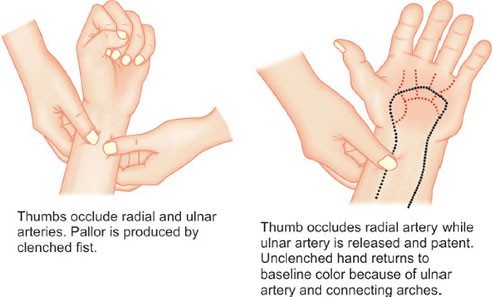After an older client receives treatment for drug toxicity, the healthcare provider prescribes a 24-hour creatinine clearance test. Prior to starting the urine collection, the nurse notes that the client's serum creatinine is 0.3 mg/dL (22.9 μmol/L). Which action should the nurse implement?
Creatinine [Reference Range: 0.5 to 1.1 mg/dL (44 to 97 μmol/L)]
Initiate the urine collection as prescribed.
Evaluate the client's serum BUN level.
Notify the healthcare provider of the results.
Assess the client for signs of hypokalemia.
The Correct Answer is A
A low serum creatinine level indicates decreased muscle mass or impaired kidney function. However, it does not necessarily indicate that the 24-hour creatinine clearance test should be withheld or delayed.
Initiating the urine collection as prescribed allows for the accurate assessment of creatinine clearance and provides valuable information about the client's kidney function. The test results can help guide further evaluation and management of the client's condition.
Assessing the client's serum BUN level, notifying the healthcare provider of the results, or assessing for signs of hypokalemia may be relevant in certain situations but are not the immediate priority based on the information provided.
Nursing Test Bank
Naxlex Comprehensive Predictor Exams
Related Questions
Correct Answer is A
Explanation
Allen's test is a procedure used to assess the patency of the ulnar artery and the collateral circulation of the hand. It is performed to determine the adequacy of collateral circulation before obtaining arterial blood gases from the radial artery. The test helps ensure that the ulnar artery is functioning properly and can supply blood to the hand if the radial artery is used for blood sampling or other invasive procedures.
The test involves occluding both the ulnar and radial arteries while the patient clenches their fist. The nurse then releases pressure on the ulnar artery while maintaining occlusion of the radial artery. The hand should quickly regain normal coloration, indicating adequate collateral circulation.
It's important to note that the Allen's test is specific to the assessment of collateral circulation in the hand and is not used for other purposes such as assessing deep vein thrombosis, cardiac output calculation, or obtaining pulmonary artery pressures.

Correct Answer is B
Explanation
Shortness of breath on exertion in a client with a history of chronic obstructive pulmonary disease (COPD) and pneumonia indicates increased respiratory distress and compromised lung function. It suggests that the client is experiencing difficulty breathing even with minimal physical exertion. This finding may indicate worsening respiratory status, increased oxygen demand, and inadequate oxygenation. The nurse should take immediate action to address the shortness of breath, which may involve providing supplemental oxygen, initiating or adjusting bronchodilator medications, and monitoring the client's respiratory status closely. Prompt intervention is crucial to ensure adequate oxygenation and prevent respiratory failure.
While the other assessment findings (bilateral diffuse wheezing, temperature of 100.5 °F, and yellow expectorated sputum) are also important and require attention, the shortness of breath on exertion poses the greatest immediate risk and necessitates immediate intervention to address the client's respiratory distress.
Whether you are a student looking to ace your exams or a practicing nurse seeking to enhance your expertise , our nursing education contents will empower you with the confidence and competence to make a difference in the lives of patients and become a respected leader in the healthcare field.
Visit Naxlex, invest in your future and unlock endless possibilities with our unparalleled nursing education contents today
Report Wrong Answer on the Current Question
Do you disagree with the answer? If yes, what is your expected answer? Explain.
Kindly be descriptive with the issue you are facing.
